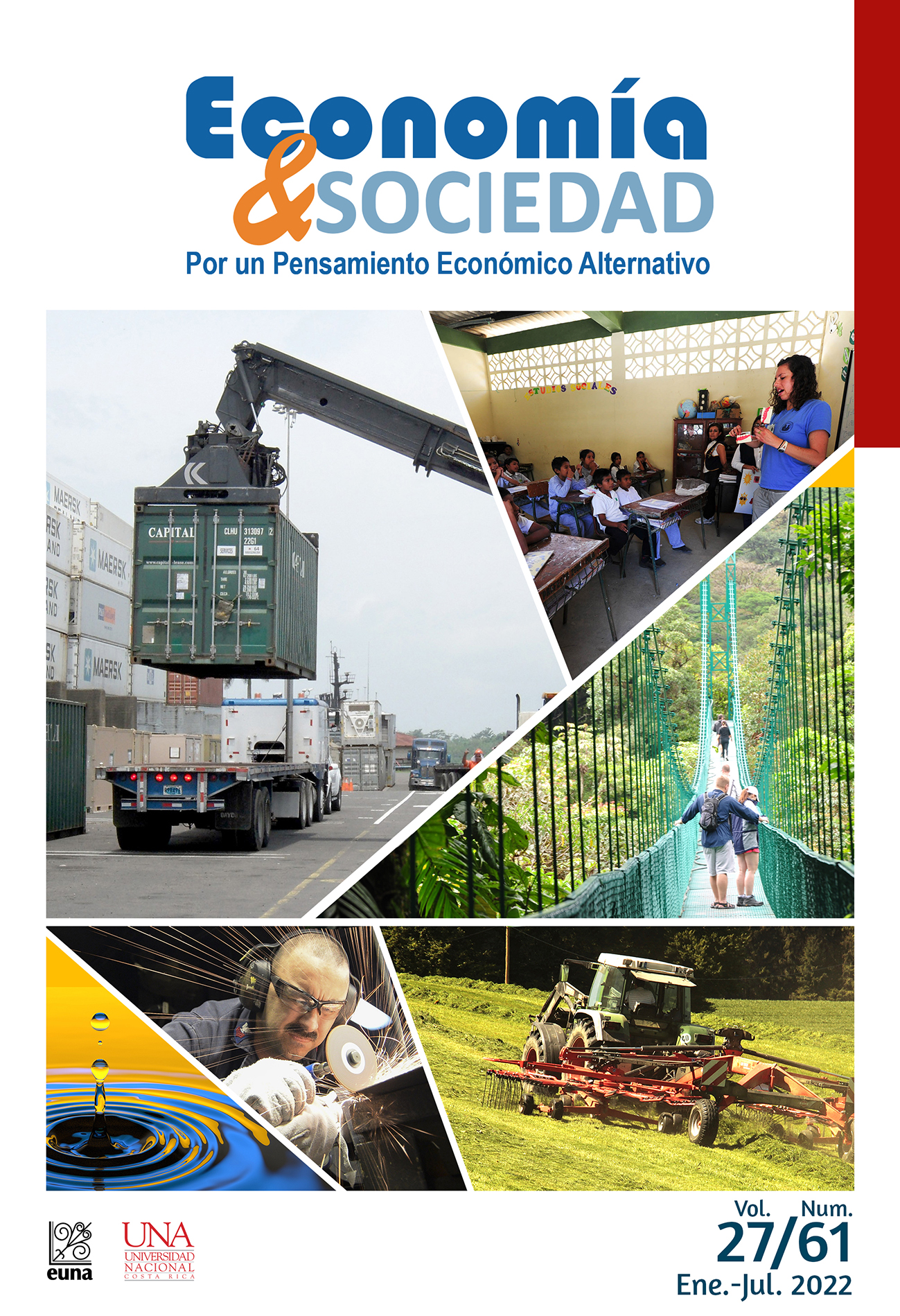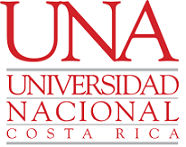Dynamic relationship between infrastructure development and long-term economic growth in Costa Rica, 1983 – 2017
DOI:
https://doi.org/10.15359/eys.27-61.2Keywords:
capital, productivity, dynamic effects, distributed lags, short run, Gross Fixed Capital Formation (GFCF)Abstract
The development of infrastructure represents a first order condition in the acceleration of the economic growth through different channels that empower off the productivity of the other production factors that compose the goods and services generation processes in an economy. In the next study it is intendent to verify, with a dynamic econometric model of distributed lags, the impact of the creation of infrastructure over the product level of the Costa Rica economy for the 1983-2017 period; the findings are congruent with the importance that has been given to the infrastructure as a driving force of the economy and it find enlightening to understand the dynamic delayed effects that these have in the growth while there are other research lines that come out as the infrastructure types of very short and short-run, medium and long term and the physic capital, productivity and growth.
References
Abarca, A. & Ramírez, S. (2016). Estudio del Crecimiento Económico Costarricense, 1960-2014. Observatorio del Desarrollo. https://www.odd.ucr.ac.cr/sites/default/files/Documents/Crecimiento-Economico/Estudio-del-Crecimiento-Economico.pdf
Alcalá-Agulló, F. (Dir.) & Solaz-Alamà, M. (2020). Globalización, relocalización productiva y crecimiento. Fundación BBVA. https://www.fbbva.es/publicaciones/globalizacion-relocalizacion-productiva-y-crecimiento/
Almon, S. (1965). The Distributed Lag Between Capital Appropriations and Expenditures. Econometrica, 33(1), 178-196. doi:10.2307/1911894
Baltagi, B. (2008) Distributed Lags and Dynamic Models. In: Econometrics. Springer, Berlin. https://doi.org/10.1007/978-3-540-76516-5_6
Barzin, S., D'Costa, S. & Graham, D. (2018). A Pseudo-Panel Approach to Estimating Dynamic Effects of Road Infrastructure on Firm Performance in a Developing Country Context. Regional Science and Urban Economics Volume 70, May 2018, Pages 20-34. https://doi.org/10.1016/j.regsciurbeco.2018.02.002
Calderón, C. & Servén, L. (2002). The output cost of Latin America’s infrastructure gap. Central Bank of Chile. Working Paper, No 186. https://ideas.repec.org/p/chb/bcchwp/186.html
CEBR. (2016). Engineering and economic growth: a global view. RAENG. https://www.raeng.org.uk/publications/reports/engineering-and-economic-growth-a-global-view
Chow, Gregory C. (1960). "Tests of Equality Between Sets of Coefficients in Two Linear Regressions". Econometrica 28 (3): 591–605. https://doi.org/10.2307/1910133
Esquivel Monge, M., & Loaiza Marín, K. (2018). Inversión en infraestructura y crecimiento económico, relevancia de factores institucionales. Economía Y Sociedad, 23(53), 40-61. https://doi.org/10.15359/eys.23-53.
Égert, B., T. Koźluk and D. Sutherland (2009). Infrastructure and Growth: Empirical Evidence. OECD Economics Department Working Papers, No. 685. https://doi.org/10.1787/225682848268.
Gujarati, D. N., & Porter, D. C. (2010). Econometría (5a. ed). McGraw Hill.
Hallegatte, S., Rentschler, J., & Rozenberg, J. (2019). Lifeline: The resilient infrastructure opportunity. World Bank Publications.
Koyck, L. M. (1954). Distributed Lags and Investment Analysis. Contributions to Economic Analysis, IV. Bulletin De L'Institut De Recherches économiques Et Sociales, 21(1), 123-123. doi:10.1017/S1373971900069778.
Palei, T. (2015). Assessing the Impact of Infrastructure on Economic Growth and Global Competitiveness. Procedia Economics and Finance Volume 23, 2015, Pages 168-175. https://doi.org/10.1016/S2212-5671(15)00322-6.
Rosales-Alvarez, R.A., Perdomo Calvo, J.A. and Carlos Andres, Morales-Torrado, C.A. &, Urrego-Mondragon, J.A. (2009). Intermediate economics: Theory and applications. https://mpra.ub.uni-muenchen.de/37183/1/MPRA_paper_37183.pdf
Rozas, P. & Sánchez R. (2004). Desarrollo de infraestructura y crecimiento económico: revisión conceptual. Serie Recursos naturales e infraestructura 75. CEPAL. https://repositorio.cepal.org/handle/11362/6441
Sánchez, R., J. Lardé., Chauvet, P. & Jaimurzina, A. (2017). Inversiones en infraestructura en América Latina. Tendencias, brechas y oportunidades. Serie Recursos Naturales e Infraestructura 187. CEPAL. https://repositorio.cepal.org/handle/11362/43134
Timilsina, G., Hochman, G., Song, Z. (2020). Infrastructure, Economic Growth, and Poverty: A Review. Policy Research Working Paper; No. 9258. World Bank. https://openknowledge.worldbank.org/handle/10986/33821.
T.S. Breusch & A.R. Pagan (1979). A Simple Test for Heteroscedasticity and Random Coefficient Variation. Econometrica 47, 1287–1294. https://www.jstor.org/stable/1911963?seq=1
Tong, H., Kumar, T. K., Huang, Y., & Kumar, T. K. (2011). Developing econometrics. John Wiley & Sons, Incorporated.
Turner, P. (2010). Power properties of the CUSUM and CUSUMSQ tests for parameter instability. Applied Economics Letters, 17(11), 1049-1053. http://dx.doi.org/10.1080/00036840902817474
Downloads
Additional Files
Published
How to Cite
Issue
Section
License
This publication is subject to the Creative Commons License; therefore, its attributions and restrictions must be respected.
Authors publishing in this Journal accept the following conditions:
- Authors retain copyright ownership and give the Journal first publication right of the paper, which is registered with the Creative Commons Attribution-NonCommercial-ShareAlike 4.0 International License. This license allows third parties to use the published work provided it is sourced as firstly published in this Journal.
- Authors may enter into other independent and additional contractual agreements for the non-exclusive distribution of the article published in this Journal (e.g., to be included in an institutional repository or published in a book) provided it is clearly stated that the work was published in this Journal for the first time.
- Authors are allowed and recommended to publish their work on the Internet (for example, on institutional or personal pages) before and during the review and publication process, as it can lead to productive exchanges and a greater and faster dissemination of work published.

The Economía & Sociedad Journal, published by Universidad Nacional, is licensed under a Creative Commons Reconocimiento-NoComercial-CompartirIgual 4.0 Internacional License. Based on http://www.revistas.una.ac.cr/index.php/economia.








